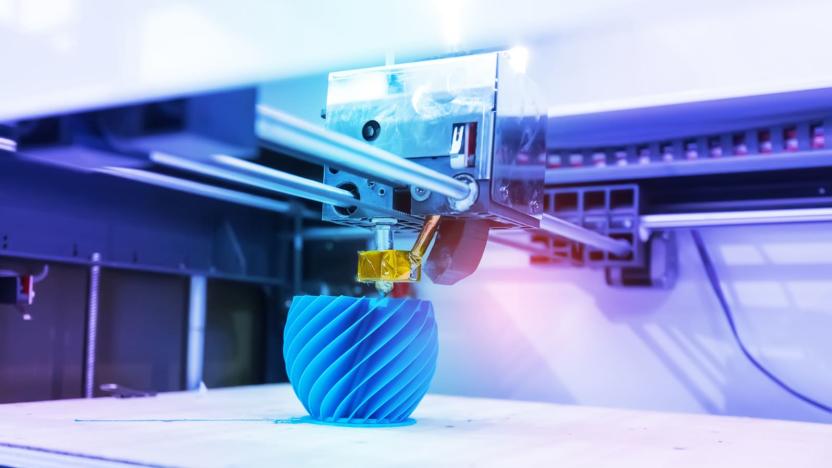University of Wisconsin
Latest

Light waves allow scientists to 3D print with multiple materials
3D printing can already create sensors for NASA rovers, rocket engines, safer football helmets, dentures. Name it, and it seems like it can be 3D printed. But the technology is still pretty limited, partly because most 3D printing systems can only make parts made of one material at a time. Now, researchers at the University of Wisconsin have discovered a way to use light to 3D print with more than one material.

Mind-reading robotic teachers are more... Anyone? Anyone? Attention-grabbing
You'd have thought that replacing a human teacher with a swanky robot would be enough to keep the kids interested, but apparently not. The University of Wisconsin-Madison found that supplying a robot teacher didn't in itself max out concentration. In one trial, they put a Wakamaru robot instructor in the classroom with only mediocre results. But then they switched it out for a robot that could read students' EEG signals to tell when they were enjoying Matthew Broderick daydreams, and which could then change its intonation or wave its metallic hands in response. That second robot resulted in far better scores when the students were subsequently quizzed about their lessons, proving once again that teaching is about more than preaching.

Twitter-brain interface offers terrifying vision of the future
We'll be honest, we're always on the lookout for faster and better ways to annoy our Twitter followers with hopelessly mundane status updates, and this brain-control interface from the University of Wisconsin's Adam Wilson seems to be the perfect to get all Scoble on it with a minimum of effort -- you think it, you tweet it. Okay okay, we kid -- it's actually just the usual brainwave-control setup you've seen everywhere, and the average user can only do ten characters a minute, but think of the potential, people. Soon everyone will know that you are "Walking on sidewalk, LOL" almost the second you think it, and all it will take is a mindreading cap paired with a sophisticated computers running an advanced signal processing algorithm connected to the massive infrastructure of the internet via a multibillion-dollar mobile broadband network. That's progress. Video after the break.[Via Hack A Day]

Researcher plans to use GPS to study asthma triggers
You wouldn't expect GPS tech to have an impact on asthma research, but the University of Wisconsin-Madison's David Van Sickle says it will -- he's planning on tagging sufferers so he can learn when and where they reach for their inhalers. The data will hopefully make sorting out environmental triggers of the disease much easier -- it took scientists eight years to prove that soybean dust near the Barcelona harbor caused a massive asthma outbreak in the 80s, a timeline that might have been dramatically shorter if location information had been available from the start. The plan's still in the early stages, but would-be participants can sign up already -- let's just hope the tracker is slightly more attractive than Kogan's enormous watch unit.[Via CNET]

